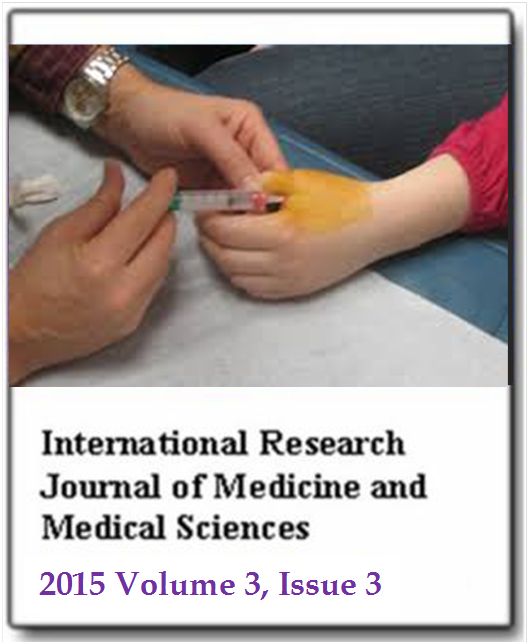Serum markers versus histopathological scoring for discrimination between experimental fatty liver and non-alcoholic steatohepatitis
Maiiada Hassan Nazmy and Manal Ismail Abdel-GhanyInternational Research Journal of Medicine and Medical Sciences
Published: July 2 2015
Volume 3, Issue 3
Pages 51-59
Abstract
Non-alcoholic fatty liver disease is a multi-factorial health problem which correlates mostly with obesity and metabolic syndrome. Construction of clearer boundaries between simple steatosis and steatohepatitis is a clinical challenge that needs further examination. We aim to offer reliable non-invasive serum markers for discrimination between fatty liver and steatohepatitis thus reduce the urge for invasive histological intervention in some cases. Sixty male albino rats were used in this study, equally divided into 4 groups (15 rats/ group). Group I acted as untreated normal control. Groups II, III, IV were fed high fat diet for 4, 8, 12 weeks respectively. Histological scoring and biochemical analysis including liver enzymes, lipid profile, lipid peroxidation, serum and tissue levels of leptin, vascular endothelial growth factor, tumor necrosis factor-alpha and interleukin-6 were assessed. High fat diet caused sustained hyperglycemia, hyperinsulinemia and insulin resistance. It also induced significant histopathological and biochemical changes in liver enzymes, lipid profile and lipid peroxidation. It significantly increased both serum and tissue levels of leptin, vascular endothelial growth factor, tumor necrosis factor- alpha and interleukin-6. All tested parameters were significantly correlated with histological scoring. Suggested parameters, based on their involvement as key players in disease pathogenesis and their high correlation to histological scoring, may be useful non-invasive diagnostic tools for discrimination between fatty liver and non-alcoholic steatohepatitis.
Keywords: Non-alcoholic fatty liver diseases, fatty liver, non-alcoholic steatohepatitis, adipokines, cytokines.
Full Text PDF
